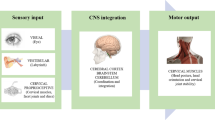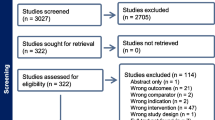Abstract
Phantom pain is a frequent consequence of the amputation of an extremity and causes considerable discomfort and disruption of daily activities. This study describes a patient with extreme phantom limb pain following amputation of the right upper limb. The treatment consisted of 6 sessions of EMG biofeedback followed by 6 sessions of temperature biofeedback. The patient did not use a prosthesis and had not received previous treatment for chronic pain. Results demonstrated complete elimination of phantom limb pain after treatment, which was maintained at a 3- and 12-month follow-up. Pain relief covaried with increase in skin temperature at stump and perceptual telescoping (retraction of phantom limb into stump).
Similar content being viewed by others
REFERENCES
Birbaumer, N., Lutzenberger,W., Montoya, P., Larbig,W., Unertl, K., Töpfner, S., Grodd,W., Taub, E., & Flor, H. (1997). Effects of regional anesthesia on phantom limb pain are mirrored in changes in cortical reorganization. The Journal of Neuroscience, 15, 5503-5508.
Flor, H., Birbaumer, N., & Sherman, R. A. (2000). Phantom limb pain. In Pain. VIII, (3, 5) 1-4. Clinical Updates, International Association for the Study of Pain.
Flor, H., Elbert, T., Knecht, S., Wienbruch, C, Pantev, C., Birbaumer, N., Larbig, W., & Taub, E. (1995). Phantom limb pain as perceptual correlate of cortical reorganization following arm amputation. Nature, 375, 482-484.
Katz, J. (1992a). Psychophysical correlates of phantom limb experience. Journal of Neurology, Neurosurgery, and Psychiatry, 55, 811-821.
Katz, J. (1992b). Psychophysiological contributions to phantom limbs. Canadian Journal of Psychiatry, 37 (5), 282-298.
Sherman R. (1997). Phantom pain. New York: Plenum Press.
Sherman, R., Gall, N., & Gormly, J. (1979). Treatment of phantom limb pain with muscular relaxation training to disrupt the pain-anxiety-tension cycle. Pain, 6, 47-55.
Sherman, R., Sherman, C., & Parker, L. (1984). Chronic phantom and stump pain among american veterans: Results of a survey. Pain, 18, 83-95.
Wahren, L. (1990). Changes in thermal and mechanical pain thresholds in hands amputees. A clinical and physiological long-term follow-up. Pain, 42, 269-277.
Author information
Authors and Affiliations
Corresponding author
Rights and permissions
About this article
Cite this article
Belleggia, G., Birbaumer, N. Treatment of Phantom Limb Pain with Combined EMG and Thermal Biofeedback: A Case Report. Appl Psychophysiol Biofeedback 26, 141–146 (2001). https://doi.org/10.1023/A:1011391223713
Issue Date:
DOI: https://doi.org/10.1023/A:1011391223713




